|
What’s the deal with was? I was procrastinating from writing this blog post. I was texted by the ACT. Registration was finally open. All those sentences contain the word was. NOT all of those sentences use the passive voice. Twice in two days I saw otherwise knowledgeable people claim that the use of was (or to be in any form) ALWAYS indicates passive voice. It does not. I also saw in those same posts injunctions to delete all instances of the word was, completely rewriting sentences in most cases. These advisers claimed it was necessary to delete, with prejudice, all instances of was to improve your writing. It is not. Yes, sometimes was indicates the passive voice: The table was set (by zombies). (I was texted by the ACT.) Sometimes was is part of the progressive verb tense: I was petting the cat. (I was procrastinating from writing this blog post.) And sometimes was is simply the past tense of the verb to be: I was blonde when I was a child. (Registration was finally open.) When you’re editing your work, you’ll want to review all of these wases and decide on a case-by-case basis whether changing them will improve your writing. Passive voiceLet’s start with the passive voice. Grammatically, the passive voice is formed by using a form of to be + the past participle of the verb. (An oversimplification: the past participle is the “-ed” form of the verb.) The passive voice is used when you don’t know the subject of the sentence (the person or thing performing the action) or when you want to deliberately obfuscate the subject.* Don’t know: The bridge was built 1000 years ago. Obfuscation: The window was broken… One shortcut to determine whether a sentence uses the passive voice is to see if you can append a subject to the sentence and have it still make sense. The internet calls this the “by zombies” rule. The bridge was built 1000 years ago by ancient peoples. (Or zombies.) The window was broken by me. (Or zombies.) Another option is to see if you can flip the sentence around so that the subject appears before the verb: Ancient peoples built the bridge 1000 years ago. I broke the window. The passive voice can be tricky: I was texted by the ACT. looks like it could be an active sentence because of that pesky I, but I in this case is the object of the sentence (not the subject). Flipping the sentence helps show that this is a passive sentence: The ACT texted me. Editing passive voiceWhen you’re editing your fiction, it’s usually best to recast the passive voice to active. Readers have to read the entire sentence to figure out who is doing the action. Because of this delay, they can’t visualize the action. Also, too many sentences in the passive voice too close together make the writing repetitive and tedious. Review all your passive sentences. If the sentence has a clear, knowable subject, try flipping the sentence around. You’ll immediately add a sense of action and movement to your writing. Keep the passive voice when you are intentionally hiding the subject, or when you don’t know the subject, and it doesn’t matter to your story (the bridge builders example). * A note about gendered languageI’m seeing the passive voice used more and more often as a way around gendered language: A backpack was left behind. The passive voice is used in this case to avoid awkward constructions like his or hers, using the singular they, or picking a new pronoun (that isn’t commonly accepted. Even singular they isn’t always accepted, tho it’s gaining ground): A student left behind his or her backpack. A student left behind their backpack. A student left behind zir backpack. As much as possible, you should avoid using the passive voice as a way of avoiding figuring out gendered or gender-neutral language. If you’re in school, check with your writing center to see how they prefer to handle gender-neutral language. If you're working, check with your HR department. Otherwise, just do your best. Gender-neutral language is a bit of a moving target. Singular they appears to be the most common acceptable pronoun at the time of this writing. Progressive verb tenseThe (American) English language has a bunch of verb tenses that indicate when in time an action takes place. The progressive verb tense (also called the continuous tense) indicates: An action that happened over a period of time: I was reading. An action that was occurring when something else interrupted: I was reading when the cat jumped into my lap. An action that is occurring while another action is also occurring at the same time: The cat was drooling on me while I was reading. (Cat 1 is weird…) The progressive tense is formed by using to be + the present participle of the verb (verb+ing), which is why I often advise writers to avoid the “was ‘ing” construction. Why? It goes back to visualization and repetition again. Readers get to was before they get to reading or drooling. It’s hard to visualize was. And when writers overuse the progressive, all readers get to read is was. The progressive also tends to create a rhythm when you use it to show interrupting action, which also gets repetitive and boring: I was going to the store when it started to rain. It was raining so hard, I got soaked. I was dripping on the carpet when I finally got home. I think we writers overuse the progressive because it’s often the verb tense we use when telling stories to our friends and family. Or, at least, when I hear my son tell stories, it’s the progressive verb tense that gets the most play. I also see writers overuse progressive when they describe settings: The flag was standing in the corner. The vase was resting on the table. It was raining. Bonus: the progressive tense comes in all flavors: Present: It is raining. Present-perfect: It has been raining. Past: It was raining. Past-perfect: It had been raining. Future: It will be raining. Editing the progressive tenseJust like with the passive voice, I do recommend switching progressive tense to something else (simple past or present, typically, depending on what verb tense you use for the rest of the novel), especially with description: The flag was standing in the corner. The flag stood in the corner. The vase is resting on the table. The vase rests on the table. It was raining. It rained. I think it’s important to keep the progressive tense in the instance you are indicating one action interrupting another: I was writing a letter to you when the messenger arrived with new mail. Otherwise, you can often switch verb tenses with no loss of meaning. Switching improves the variety in your sentences and improves the readers’ ability to visualize your action. Sometimes was is just to be...Sometimes was is simply the past participle of the verb to be: I was blonde when I was a child. To be is a verb that shows a state of being. It is also called a linking verb: a verb that joins the subject and some condition of that subject: I was young. My sister was taller. Cat 1 is black. When using the verb to be, you are writing about a condition. There is no action in these sentences. Too many of these sentences too close together will be… wait for it… repetitive and tedious. Editing for stronger verbs than to beSometimes a simple statement of being is all you want, so read those wases carefully and decide whether you need that existential statement, or whether you can recast the sentence to something active: Cat 2 was afraid. Cat 2 feared the fireworks. My sister was taller. My sister grew taller than me when she was 10. If you find you truly need all those was sentences, consider rearranging passages to avoid repetition. When I'm doing the editing In a developmental edit (or manuscript critique) I don’t make any changes to any of your wases, regardless of which was you are using. A dev edit is focused on a much bigger picture than your wases: like does your plot make sense? I do make a note in your editorial letter alerting you to how you may be overusing was, and providing examples as to how to fix it. (Or, in future, maybe you’ll get a link to this post!)  In a line edit, I will offer suggestions to change passive voice to active voice, and progressive tense to simple past (or present, whatever your primary verb tense is). I will offer suggestions for how to rearrange sentences when the wases are necessary but repetitious. I don’t change ALL wases indiscriminately. As I read (carefully!), I make judgement calls for each instance.  A proofread is a time to dot the is and cross the ts to get the manuscript ready for publication. By the time you’re doing a proofread, you are typically looking only for egregious errors. You absolutely want to ensure you don’t introduce NEW errors while trying to fix something that doesn’t necessarily need fixing. Using the passive voice and progressive verb tense are not errors; they are style choices. I am unlikely to change these in a proofread unless things start to feel really repetitive. Fixing passive voice involves flipping sentences and assuming the subject if it isn’t already written in to the sentence. I won’t fix passive voice in a proofread. Changing the progressive tense is often simple and doesn’t introduce any large changes (which can introduce errors). I’m likely to contact you to see if you want me to make those changes, but otherwise, I won’t make changes to the progressive tense either. And when was is simply to be? Again, that’s a style choice and not an error. I won’t make changes to those sentences either.
0 Comments
I read...I read The Farwalker's Quest by Joni Sensel. It’s been on my list for a while; couldn’t tell you why anymore. I put books on The List anytime someone suggests it for any reason. (I used to lose The List but then I moved it to Amazon. And GoodReads.) In this instance, Joni (pronounced Johnny) herself bumped the book to the top of the list. We had a gap in our writing/critique group so we sent out a call to our local chapter of SCBWI (pronounced skib-wee; really. Ask Jon Scieszka (rhymes with Fresca)) to help us fill it. Joni asked to sit in on a meeting to see if we’re a good fit. (Critique groups can sometimes act as therapist/spouse/best friend so you want that relationship to be nurturing/kind/ass-kicking as appropriate. It’s good to visit a few different groups a few different times to see how they work before committing.) Anyway, I squee’d with joy and fear (writer’s self-esteem kicking in. How can we help a real live published author?!) then gave her our standard introduction and thought maybe I better go read her book! Just so you don’t think I’m gushing (tho I sort of am; I enjoyed this book considerably), I had not met Joni nor read any of her work before I started reading FARWALKER. And I learned...Worldbuilding. I harp on it because it is so very important (and because it’s one of my favorite things). When a reader cracks open a book, especially if they’ve pulled it from the Fantasy/Science Fiction shelf, they have no idea what they’ve opened up. There are the basic questions: who is the book about? Age, name, gender? Then there are the more complicated questions: what is this world like, how does it differ from our own, and how does it affect the main character? When I was a youngster working for $3.35 an hour (that was minimum wage in Missouri. You can do the research to find out just how old that makes me), I had two strict rules: 1) I would not pay more than a penny a page for a book. If the book cost $3.99 and was less than 350 pages, it was a no-go. 2) I would give every book 50 pages to suck me in and teach me about its world before I gave up on it. I read fantasy pretty exclusively back then, so it was like jumping into a whole new world every time I switched series. Given that 50 page rule, let me show you what Joni shows us of her world in her first few pages. Single-word worldbuildingWhen I critique or edit your writing, I often ask for adjectives to help set us in a certain time and place. In her first chapter, Joni uses a few well-placed adjectives to set up a preindustrial, possibly subsistence-living, village.  “Their catch wiggled in the wood bucket…” [emphasis added] Wood buckets tell us this society does not have a supply of cheap metal. Wood is more plentiful and cheaper to shape than metal for these people.  “Zeke watched his goat-leather boots…” Goat-leather boots tell us this group is on marginal land—not enough pasturage for raising cattle. Goats imply a rocky area. And given a child (Zeke is 12) is wearing leather, that implies the goats are relatively cheap/plentiful (as opposed to today where real leather goods tend to be expensive compared to synthetic counterparts).  “Together they’d trapped classmates in the outhouse…” “lowered each other into the village well” Outhouse and well imply no indoor plumbing. (Classmates indicates some sort of formal schooling.)  “Her mother had given up on insisting on skirts…Ariel wore mostly wool trousers and sweaters.” Skirts shows us girls are expected to dress differently than boys. That Ariel doesn’t shows us it’s not horrific if she goes against the culture. Wool trousers and sweaters can come from the already mentioned goats. Each piece of clothing can be handmade, which keeps in line with the preindustrial/subsistence theme.  “beyond that were thatched and tiled roofs” Thatch for poorer homes; tile for the more well-off ones. Shows multiple classes within the society. Worldbuilding in a character's nameSometimes a name is just a name, but sometimes it tells us about a world’s culture. In Joni’s first chapter, we learn of Luna Healtouch, Ariel Healtouch, Fisher, Reaper, and Tree-Singer. We also learn a bit about how those names are given:  “’But Namingfest is only three days away!’” “He couldn’t say he might fail.” “both of Zeke’s brothers had settled for more ordinary trades” “She would turn thirteen later that summer, so at Namingfest in a few days she could apprentice herself to a Fisher or Reaper. But the easiest course would simply be to learn from her mother [Luna Healtouch]” “Several [symbols] she recognized as the signs of a trade: the Windmaster’s, the Tree-Singer’s, and of course the xx that marked the home of a Healtouch With these phrases, we learn that a person’s last name is also their occupation, their trade. We learn that when children are about to turn 13, they are apprenticed in a particular trade and that is when they are given their last names. Through some of Zeke’s comments, we also learn there is some anxiety and uncertainty, and perhaps some kind of test, involved in choosing a trade. This all shows us the entire culture is involved in training up the next generation to work. Children are not given the opportunity to continue their broad education, nor do they seem to choose a craft for the sake of the craft itself (art or music). Children are apprenticed to something that will earn them a place in the village, and while they have some say in what they are apprenticed to, not all of them succeed in their first choice. Worldbuilding with magicSome fantasy has magic, some doesn’t. Which story are you reading? Unless it explicitly says on the blurb you happened to read, you won’t know until the author shows it to you. Joni sets up magic in the very first sentence and runs from there.  “Zeke’s tree wouldn’t speak to him.” “A Tree-Singer could be the most important person in the village. Hearing the voices of trees and coaxing them to share their great wisdom took special talent” “Unlike tree-singing and the more mystical trades, most of the healing skills could be taught.” “She’d envied his talent [Zeke’s ability to talk with trees], since she seemed to have none of her own.” “In fact, Ariel had the strangest sense that the tree wanted to be climbed.” “’I thought telling darts were supposed to find the people they were sent to, [Ariel says]’” “Before her eyes, the tree reached to catch him” From all these bits and pieces, we learn that there is a kind of magic in this world and that some of it relates to talking to trees (and hearing what they have to say back). We learn that magic may be an inherited trait (it cannot be taught). That the darts (inanimate objects) are supposed to find a particular person also smacks of magic. Adding depth to your world with historyAnd finally, let’s talk about history. Unless your world is new-minted (like Narnia in The Magician’s Nephew) it will have a history. (Altho, come to think of it, even new-minted Narnia has a history.) That history can give your world a richer feel, less made up/more real, or it can provide conflict for your current characters (those who don’t learn their own history will continue to step in it…). In the first chapter, Joni already starts laying in her world’s history.  “Maybe Zeke’s tree, grateful, would share an old secret, like where to find gemstones or the legendary treasures locked away in the Vault.” “Ariel had never seen a telling dart, but she had heard plenty of stories.” “’I didn’t think you could still find stuff like this anymore,’ she [Ariel] said. Darts that could talk were only one of the marvels lost after the Blind War and now known only in legend.” Already we learn of some type of major historical event that changed this world and that something from before that event has come to affect Ariel and Zeke. Conflict set up through worldbuilding. TL;DRThis worldbuilding stuff is really important. It fixes the reader in a particular world: time, place, and technology/science/magic level. It provides interest in your story, like frosting on a cake, making the story-cake that much more interesting/tasty. (My metaphor is only kind of working here.) Good worldbuilding can provide the conflict for your story. Once you've taken the time to develop two wildly different cultures, it can be easy to see how they'd disagree and how they'd handle those disagreements. And, finally, worldbuilding can help create your story. I once took an online class with Holly Lisle who created a three-book fantasy series after drawing a map and creating the world that created the map. Worldbuilding in a very literal way. Read 1000 booksReading widely changes your writing. For the better. Many published writers credit their success to having read voraciously, both in and out of their chosen genres. But most people don't read like editors; they read for enjoyment, not to learn a new writing technique. I read for a zillion reasons, and one IS to learn writing and story-telling techniques. Occasionally, I'll write about what I learn and share it with you here. Read 1000 books. Then write one. A little backgroundI first wrote this piece approximately a thousand years ago (or nine. Nine years ago) and posted it to my blog, but that blog has since disappeared into the ether. So, here it is again.
I read...A few years ago [a lot more than a few years ago now] I got the chance to meet agent Nathan Bransford at a local SCBWI conference. He critiqued the first five pages of my first novel. The two pieces of feedback he gave me? “A lot of novels start this way.” (One character upstairs, another downstairs, calling to each other.) And, “You don’t have a unique voice.” Ouch. I thanked him and left. My 15 minutes were up. I spent the second half of the day mooning about and then—if you’ll excuse the decidedly non-feminine expression—manned up and marched over to where Nathan was waiting all by himself and asked if he could recommend any books I should read that had a good strong voice. He did. Ball Don’t Lie was one of them. And I learned...Ta da! Voice! Voice is the magic of a book. No voice and you’re likely to get a form rejection. Every agent and editor (and reader!) is looking for “fresh new voices.” Trouble is, voice is also nebulous, hard to describe, harder to teach, but oh-so-obvious when you read it. Voice is a concatenation of writerly skills, techniques, and just plain individual style. Voice is limitless. Voice is not simply point of view, tho I have heard some authors call it that. Point of view is fairly limited: 1st person, 2nd person, 3rd person; limited or omniscient. POV is a part of voice, but not the whole of voice. de la Pena uses an external first-person narrator to tell an omniscient third-person story about Sticky, the main character: I could tell you a lot about this game… (says the narrator) Oh, that name, the lady said in a voice so Sticky couldn’t hear. She moved under the game room door frame. We’ll have to do something about that awful name. Voice includes using slang or swear words, whatever words your characters may use. In the right novel, voice can include dusting off your SAT vocabulary and busting out with words like septuagenarian or apotheosis. de la Pena uses street slang to describe street basketball: It’s tied sevens and Sticky’s handling the rock up top. Back and forth with the left hand. In front of his glazed body. Rhythm pats. Type of dribbles that get you in the groove to cut and slash, body loose and quick to make somebody look like a fool. The ball is also called a “brick.” The hoop a “bucket.” Men are called “cats” and “fellas” and “guys.” Girlfriends are called “old ladies.” Voice includes how you write description: as solid blocks of fragmentary sentences or long, flowing, lyrical sentences. de la Pena does things a little differently by using a colon to set off phrases of description: Jimmy is: eyes the size of golf balls in thick Coke-bottle glasses, overgrown crop that starts a thumb’s width from his bushy eyebrows, old beat-up flea-bitten sweatshirt zipped up to the throat: ARMY FOOTBALL. Voice can include repeating phrases over and over to indicate a character’s personality: Sticky shook her off. Pulled out one pair [of pants], checked tangs twice (price and size) and then stuck them back on the rack. When the sticking-back sound didn’t sound right, he pulled them off and stuck them back again. Pulled them off and stuck them back. He started to panic inside. Started sweating. Last thing he wanted to do in front of this pretty girl was act all retarded. But he couldn’t stop himself. He pulled them off and stuck them back again. (Note the use of the word retarded in that quote. Many people won't use it, so its use here is part of voice and part of character development.) Voice can include formatting, like using italics for dialog: Oh, damn, that was a nasty foul, Dave said, holding a fist to his mouth. Jay had to slap em down, though, Sticky said. He had to let em know whose lane it was. Fat Jay did just like this, Sin said, and he put his arm out clothesline style and swung it through the air. That’s the kinda foul that could set the tone. Like Sticky said. After Fat Jay did that, wasn’t no little number twenty-three flyin through the lane no more, right? Voice is all of these things. And a little bit more. Voice combines to create a story that could only be about Sticky, only be written by Matt de la Pena. You could pick this book up and read a few lines and know it wasn’t written by Suzanne Collins or Meg Cabot or even Chris Crutcher, another YA-boys-sports-issues book writer. TL;DRVoice is a unique blending of all these tools: POV, verb tense, word choice (which includes formal vs slang, in addition to individual words), metaphors, how you handle description, even formatting. It happens through writing over and over and over again. Every day. Pruning out that which doesn’t fit, allowing to grow that which does. Voice is developed over time and with much practice of the basic skills in a writer’s toolbox. Voice truly is more than the sum of its parts. Read 1000 booksReading widely changes your writing. For the better. Many published writers credit their success to having read voraciously, both in and out of their chosen genres. But most people don't read like editors; they read for enjoyment, not to learn a new writing technique. I read for a zillion reasons, and one IS to learn writing and story-telling techniques. Occasionally, I'll write about what I learn and share it with you here. Read 1000 books. Then write one. A little backgroundI first wrote this piece approximately a thousand years ago (or nine. Nine years ago) and posted it to my blog, but that blog has since disappeared into the ether. So, here it is again. Related articlesWords. Removing emotion words, that is. She felt sad. He was angry. If you find you’ve written sentences like these in your manuscript, chances are good you have one of two problems:
It’s easy to write, “He seemed agitated.” It’s much harder to think about and write something like: His hands moved in a circuit from rubbing the back of his neck to pulling the collar of his shirt away from his throat to patting his right hip pocket. He flinched when the clerk asked for his order. It’s more interesting for us readers to experience your story by reading these descriptions; we lose that experience when you tell us someone is bored. We also get to know your character better when you show us how that character experiences boredom: one person may watch TV and eat a bag of chips; another may pace; and another may start picking at the loose threads on their sweater, slowly shredding it. And, bonus!, these descriptions give you something more to work with later in your story. Perhaps that empty chip bag becomes a clue to whodunnit. Maybe that shredded sweater was a gift from an ex-boyfriend who comes back seeking a reconciliation. When you come across emotion words in your manuscript, try deleting them. If the scene still shows the emotion, then you’re done. You didn’t need that crutch. If you’ve lost something by deleting that emotion word, work on rewriting the scene a bit to show the emotion. If you find you’re struggling with describing emotions, check out the Emotion Thesaurus. This book, written by writers for writers, lists 75-ish emotions and their definitions. The writers include both external (visible to an outsider) and internal (felt only by the person experiencing the emotion) signs that describe each emotion. When I'm doing the editing
What do these sentences have in common?
These sentences all use more words than are necessary to convey meaning. You can only nod your head,* and a nod only goes up and down. You can’t squint anything but your eyes, just as you can’t shrug anything but your shoulders. Ice is frozen; it’s always frozen. When ice isn’t frozen, it’s just … water. And when you kneel, you kneel down; you can’t kneel up! Adding those extra words creates a type of redundancy called pleonasm. As an editor, I also find those phrases pet peeves, and I kill them dead. See what I did there? “Kill them dead” is another pleonasm. You can’t kill something halfway. (I did the same thing in the title of this blog post.) Most pleonasms are stylistic errors, but you can use a pleonasm as a stylistic choice to add (poetic) emphasis: “I saw it with my own eyes.” Whose eyes? My OWN eyes! Some phrases, like “free gift” or “foreign imports” are used so often together that it can be hard to recognize that they contain redundancies. And some phrases, like "tuna fish" are idiomatic (in American English, at least), and so you can make a case that this instance is not a stylistic error. This list of 200 common redundancies in English can help you re-train your eye. When you spot pleonasms in your writing, it’s best to delete the redundancy, as many readers will consider it an error. Aside from that, deleting any redundancies just makes your writing tighter, which can help it become more powerful. And, if you’re focused on a tight word count, deleting redundancy is an easy way to start cutting. Alternatively, make very, very sure that you INTEND the redundancy because you want to emphasize the thing that is repeated. When I'm editing your work...
* OK, so it’s not entirely true that you can only nod your head. James S. A. Corey, in his series The Expanse, created a hand- and body-gesture-based language for people who work in bulky space suits. You can’t see someone nodding in a space suit, so in his world, spacers “nod their fist.”
Every character needs a description, but how do you include that description without stopping the story's flow? How do you include it without creating a situation that feels contrived? How often should you describe your characters? Read Beguilement by Lois McMaster Bujold and learn description techniques from a master. To describe or not to describeShould you describe your characters at all? Some writers believe that offering too much (or any) description of the main character distances readers from the story because then readers cannot simply picture themselves as the protagonist. Some writers want to control their world and characters and therefore want to describe those characters so completely they cannot be confused with anyone else. Ever. Either of these choices is reasonable (altho the second can easily become tedious). These choices are style issues: some readers want a lot of character description while others don't. You get to pick what you want to do. Repeat, repeat, repeatIf you decide to describe your characters, you must repeat that description throughout your story. Not as a solid block, but with key words placed strategically here and there to remind readers who they are reading about. Readers need these reminders because, while some will sit down to devour a book, most have to set it down to eat, sleep, do homework/laundry, go to school/work, and they will forget what the characters look like during their time away from the book. (Or worse, if they are like me and have two or three books going at once, a lack of description can make it harder to keep the separate story lines straight.) BEGUILEMENT and Fawn BluefieldBujold had some 14 published books under her belt before she wrote Beguilement, the first book in the Sharing Knife series, so she knows a thing or two about writing. She has a clear idea of what her characters look like and keeps offering up reminders for the reader. Fawn Bluefield, the book’s female protagonist, is described as short, with pale skin, dark curly hair, and big brown eyes. All those descriptions are offered up, again and again, in different ways and from different viewpoints. Character ThoughtsFrom Fawn’s point of view, we learn her appearance through her thoughts (and note the page numbers, to see how often the simple description of being short, or having curly hair, is repeated, and how late into the book it appears):
Character ActionsWe are also reminded of Fawn’s appearance through her actions:
Other Characters' ThoughtsWe see Fawn’s appearance through the eyes and actions of others, most often from Dag, a Lakewalker patroller who is essentially a foreigner in Fawn’s lands. Note again that these descriptions are consistent, and appear even very late in the book.
ComparisonsA good way to continue reminding readers of a character's description is to compare one character to another. With living characters, you can provide info about both characters with the description. With dead characters, you can give us description without being too contrived: She looked in the mirror and noticed her face now looked like her mother's. No wonder her father turned away from her. Note that this technique is almost common enough to be a cliché, or at least a trope (at least in the fantasy I've read), but it can be useful, especially if the comparison between two characters helps explain the relationship between two other characters.
Why did I read this book?Uh, ‘cause I just loves me some Bujold? Seriously, Lois McMaster Bujold is, like, my favorite author EVER and I reread her stuff with surprising regularity. Now to be honest, this isn’t my favorite Bujold book, and the first time I read it, I really didn’t enjoy it. I was reading it with the YA rules for new authors in mind: all first books in a series must satisfyingly end before the second book can start. This one doesn’t do that. It just stops, rather like the first part of a four-part book than a complete story in itself. When I read it a second time, as the first part, I liked it much, much better (tho the third book in the series is, in fact, my favorite). I started reading the series again because I wanted something familiar and comfortable. I had a sinus infection when I started re-reading these books and I just didn’t want to struggle with a new author/story while struggling with massive headaches. (Whine, sniffle, whine.) Beguilement, by Lois McMaster Bujold. Book 5/1000. About 1000 BooksReading widely changes your writing. For the better. Many published writers credit their success to having read voraciously, both in and out of their chosen genres. But most people don't read like editors; they read for enjoyment, not to learn a new writing technique. I read for a zillion reasons, and one IS to learn writing and story-telling techniques. Occasionally, I'll write about what I learn and share it with you here. Read 1000 books. Then write one. If your main character is … non-standard: overly mean, vapid, or maybe just plain dumb, learn to evoke sympathy in your readers to keep them engaged in your story. I read Flowers for Algernon by Daniel Keyes and State of Grace by Hilary Badger back-to-back. That order wasn’t intentional. I read Flowers because I saw the title used in another book (Nicola Yoon’s Everything, Everything), remembered it was classic sci-fi, decided I should read it *because* it’s classic, and I put it on hold at my local library. I read it when it came in and then… had nothing immediately queued up to read next. I was skimming my book list and stumbled on Grace. It’s not actually my book. It’s my son’s. He asked me to buy it for him because he made a deal with his friend: He’d read her favorite book (Grace) if she read one of his (Harry Dresden). He never got into it. I figured, well, I read and edit YA and fantasy and *this* YA fantasy is a teen’s favorite, so I should read it. (A large number of the books I read are “shoulds” to keep myself up-to-date with current trends in novels. I don’t mind; it makes it way easier to pick out a book to read when I’m reading for a zillion different reasons, only one of which is pure entertainment!) So, I read these seemingly very different books back-to-back and was stunned by the similarities in story-telling technique. Both books start out with a not-obviously interesting character: Keyes’ Charlie is a literal moron (“retarded” in the mentally deficient meaning used in the late 1950s) and Badger’s Wren is a vapid teenager, obsessed with having fun. On the surface, these characters shouldn’t work. There’s no “hook” that lets us latch on to them. Most of us who read are not morons or vapid. How do we see ourselves in these main characters? Neither character is a deep thinker or even observer of the people and situations happening around them. Neither character seems to be a driver, or even able to drive, their own destiny. And yet… somehow Keyes and Badger are able to evoke sympathy in us for these seemingly simple characters, and that sympathy propels us along the story until the characters grow into themselves. Flowers for AlgernonFlowers is written in first person POV, and Charlie is a moron. It’s rather difficult to read Flowers at first (unless you’ve had practice with a kid whose school told students to write phonetically and worry about spelling later):
Those misspellings aren’t mine. This is how Charlie hears the words and translates them to the page. Every time Charlie writes (in the first few chapters), it’s this painful phonetic writing with a lot of repetition (Keyes and his editor are GENIUSES, keeping just enough repetition to show us Charlie but not so much we want to gouge our eyes out). But… Charlie is also earnest in his single-minded desire:
It’s this earnest desire to “be smart” that keeps us reading. Charlie wants very much to be smart, and I found myself reading more: why does Charlie want to be smart? What does he think he’ll get in return? Can the scientists help him?
As Charlie writes more, we see events that have happened to him during his life, some of them awful, but Charlie never saw them as awful when they happened. We see these stories from two points-of-view: Charlie before he is smart, and Charlie after. (Spoiler alert: the scientists DO make Charlie smart.) His first viewing of events pains us because we see the subtext he didn’t. We see him laughing along with his own degradation as people he thinks are his friends make fun of his deficiency. Worse, we see the events AGAIN as Charlie re-processes them once he’s “smart” enough to see the subtext himself. (Honestly, this is one of the most relentlessly tragic books I think I’ve ever read.) Our hearts break all over again. As Charlie “gets smart,” our sympathy for him grows and becomes sympathy for ourselves because NOW we can begin to see ourselves in him. The pre-smart Charlie couldn’t question anything. The smart-Charlie wonders about everything.
What does it mean to be human? How do you live a good life? How do you create a loving relationship with someone else? These are all questions we often struggle with and watching Charlie come at them from an educated innocence lets us see these issues from a new angle.
Keyes uses our sympathy for Charlie’s innocence and child-like desires to draw us along the story until Charlie becomes sophisticated enough to lead us on his own. State of GraceState of Grace starts out with a similarly child-like character. Teenaged Wren (she’s 16 or 17-ish) appears singularly interested in having fun:
Wren has both the simplistic desires of a child and the childlike ease of accepting and following authority. (And if you’ve raised/are raising a teenager, you know this is SO not the typical case!)
The first few pages are all about Wren pursuing hedonistic activities with very little responsibility of any kind. Even the teens for whom this book is written aren’t living this life, so what keeps us going? It’s that sympathy again. Quickly, Badger shows us that not all is right in Wren’s world, and even when Wren can't (or won't) see it, we do.
Wren is experiencing something strange, something she “shouldn’t” and it’s her fear that evokes sympathy in us. We’ve all felt (especially when we were teens!) that we didn’t fit in and that not fitting in is dangerous because it means we’re all by ourselves in this big scary world. (Isolation is a cruel punishment/torture in almost every culture.) We keep reading Grace to see how Wren handles her fear and doubts, to cheer her on when she’s feeling “prenormal.” Our sympathy keeps us reading until Wren has grown sophisticated enough (in her doubts, in her searching for truth/meaning) to lead us in her own story, just like Charlie. CodaEverything you read has the capacity to teach you something: about yourself, about your world, and (perhaps most importantly) how to write better. If you like this idea of engaging a reader's sympathy, you may also want to consider reading the Thomas Covenant series by Stephen Donaldson. Donaldson's anti-hero's actions are profoundly unheroic. About half the people I know who read this series (it came out in the late 70s and is STILL in print) threw the book across the room and quit forever and the other half kept going, grudgingly, after they picked the book up off the floor. That anyone kept going at all (and I was one), is, I think, a huge testament to the power of sympathy. Some backgroundA thousand years ago* I wrote a post about how reading 1000 books changes your writing. I wrote a few articles*** about different techniques you can learn by reading different books. I wrote about how I really don’t like rating books. So much of rating is based on personal preference and what I like you may not and vice versa.** And then… I didn’t write anymore. Hah! That changes now. * Three. Three years ago. ** Plus… I know just how long it can take to write, rewrite, edit, re-edit, format, re-format a book. Who am I to judge its quantitative worth? I liked it, I didn’t like it. I loved it enough to ready it a zillion times; I learned enough from reading it once. My 4 stars means nothing to you… *** Related articlesMy plan was to stop there. Wish everyone a happy Thanksgiving and then be done. But... I started thinking about the first time my husband (then my fiancé) had Thanksgiving dinner at my family’s home. I remember his surprise at all the different dishes we served, his disgust at one of them*, and his confusion when he caught me and my cousin flipping the cookies upside down**. Your family traditions are a gold mine. Mine those memories to practice writing description and editing down that description to a few key details. Family traditions are typically rich in description opportunities: What do you eat? What activities do you do? Who joins you? Where do you meet? Food is one of the easiest things to practice describing because it’s accessible (we eat literally every day***) and it hits all the five senses: The sight of a perfectly baked pumpkin pie; the scent of cinnamon and cloves and ginger; the sound of a knife slicing thru the crisp crust and hitting the pie plate underneath; the taste of that first bite; and the smooth texture of the custard contrasting with the flakey crust. When you’re writing a story, you probably don’t want to include all five senses in every description opportunity. Your story can easily become tedious to read! Instead, you want to pick and choose key details that help propel your story. Show us something about your character: she hates ginger so that’s the detail you share, along with her reaction to it. Why doesn’t Mom ever remember I HATE ginger? Show an awkward silence (instead of tell) by describing the sound of the knife hitting the pie plate. It’s a small sound and easily missed when the room is full of chatter. If it’s the only detail you share, your readers focus on it and understand all that you don’t say. That brings me to another thing: show vs tell. It’s arguably one of the cardinal rules (if any writing rules really exist!) of fiction writing, but a lot of writers don’t know what it means. What is the difference between showing and telling and when are you doing one or the other? Description helps show (rather than tell) a scene. Consider:
This certainly isn’t the greatest writing (shitty first draft, baby!) but it should be enough to show the difference between showing and telling. The obvious: showing is generally longer than telling. And the less obvious: I never once wrote “Steve was worried” in the second sample. I didn’t write that the cigarette ash might fall into the food. By describing the scene, by showing it, you as the reader infer that Steve is worried and what he’s worried about. (And if that didn’t come across in this first draft, I’d revise!) So if you find yourself with some quiet time this Thanksgiving, or any celebratory event, duck away and write about it. Start with the food and try to capture all five senses. Move on to the activities. Describe people’s actions to show their emotions****. Lastly, think about picking and choosing those details to use them in a scene. How can you show this mood? How can you show increasing tension? What can we learn about this character? And then get back out there with the family and have some pie! * Hard-cooked eggs, boxed croutons, canned cheddar cheese soup. I can’t even find it on the internets… My mother never cooked anything without a recipe, so it had to have come from somewhere. ** I grew up lower middle class. When my mom made Tollhouse cookies, she doubled the recipe on the back of the bag of chocolate chips, but only used the one bag. We flipped the cookies over because it was easier to see the chips and eat the cookies with the most! *** Um… *I* do. I suppose you may be fasting on occasion. **** This also gives you the benefit of studying people so that when you write your fictional people, you have natural actions at your fingertips.
More words help provide you with more ideas, write tighter (by killing your “helping” adverbs), provide your readers with better description, and even offer a sense of “realness” or honesty to what you describe. Back in 5th grade, my kid got vocab words. I only remember “abut” because… well… we ALL adopted the 10-year-old’s sense of humor. The vocab words stopped coming home in 7th grade and I found I missed them. Yes, I am an editor and I like words, so that was part of it. But it was more than that: your ability to communicate is based not only on how you use words, but also on which words you use. More words gives you more options. TL;DR? New words make you write gooder, so learn more. Ideas, more ideas!In a previous life, I was a linguistics major (for a semester). At the time, scientists were trying to determine whether the thoughts we are able to think are determined by the language we speak. The questioning went (if I remember right!), if you don’t have a word for something, can you even think about it? I’m sure this argument is much more complex than I’ve just written because I can still feel overcome with emotions, and think about what it feels like, without knowing the Yiddish word verklempt. And I can understand taking pleasure in someone else’s pain even if I don’t know the German word schadenfreude. (But then… I’m not always a nice person…) On the other hand… If I don’t know what an orrery is, then I can’t have one sitting on my character’s desk to show either a) his delight in having an antique or b) his patronage of this new field of engineering. If I don’t have multiple words for various types of snow, do I pay attention to what kind of snow is falling out the window? (I do not. I hate snow.) Snow has no importance to me or my culture, so it’s all just snow. Snow to Inuits, however, is a pretty big deal, to the point it’s estimated they have more than 50 words to describe it. Language helps us make sense of our world, and writing helps us make sense of our world, and reading what others have written helps us make sense of our world. The more words we have at our disposal, the better job we can do sharing our ideas. Or the more ideas we can have in the first place. I’m not saying go out and learn all 50 words that the Inuits use for snow. That’s crazy. But… knowing there are 50 words for snow sorta* makes me want to create a frozen world where that sort of knowledge might drive an interesting plot… * And by “sorta” I mean not at all. I’m getting cranky just thinking about how much snow must fall and for how long throughout the year for there to be 50 different kinds of it. I want you to know: I really, truly hate snow. Kill your adverbsShe used very few words to express herself. vs She was laconic. He was very mad. vs He was furious. She was very hungry. vs She was famished. The orrery was very, very old. vs It was antediluvian. These are simple sentences that don’t necessarily capture the true essence of a better vocabulary, but bear with me here. I started writing this on Halloween, so I was in a bit of a sugar coma… (And then I stopped writing it because I had to answer the door to some 200 little beggars. Though some were totes adorbs and some were truly scary. Kudos to the two middle-school girls dressed up as the twins from The Shining. Shudder… And then I got busy with other things and forgot to come back here. Sigh.) Adverbs weaken your writing because they can’t be visualized. What does “very” look like? Once we’ve skipped over that “very,” all we have left to work with is “mad,” which may not be as powerful a word as you wanted. More words at our disposal allows us to tighten our writing by ditching adverbs and other modifiers. Better descriptionNew words give you the opportunity to describe your scenes better. Part of reading is creating scenes in our heads: how does what we’re reading translate to sight and sound and touch? A leafy bush vs a hydrangea. Fruit vs a peach. Fretful whining vs querulous. For people who know what a hydrangea is, they get a beautiful mental picture of what you’re describing. For those who don’t, maybe they’ll look it up, but even if they don’t, they’ll get “plant” from the context. Fruit doesn’t give readers much to work with. Peach gives us everything: the feel of its skin, its color, the firmness of the flesh when you bite into it, its scent and taste. For some of us, we even get an idea of what time of year it is (or whether that peach has been imported or magically ripened). (Sure, you probably don’t need to learn what a peach is, but you might want to learn about rambutans or dragonfruit. (I learned about these while visiting a chocolate plantation in Hawaii. Slimy little fu- Er… I did not enjoy them.)) “Mad” isn’t very nuanced (Gah! Very!). Irate, ballistic, indignant are all shades of “mad” that better describe the emotion your character is feeling. You don’t lose anything by using a better, fancier, and/or more descriptive word except maybe a few adverbs.* But you gain a vivid mental picture of whatever you’re creating, which draws your readers in and keeps them coming back for more. * Well, that’s not entirely true. The more specific a word you choose, the more baggage is attached to that word, so… you may need to do your research. For example, if you have a farm-to-table culture (like in, say, a pre-industrial society), then you need to know that strawberries are not typically still in season when apples ripen. VerisimilitudeNew words help you evoke a scene and add verisimilitude. (That’s a twofer of vocab words right there in that sentence!) If you’ve never lived in a place that has graupel or freezing fog, you may not know that these things exist. If you decide to write about a character who lives in the Seattle area, in the late fall/early winter, and you DON’T include these things, your readers who HAVE lived in Seattle may get a little testy. Pfft, they’ll think. She doesn’t know squat about Seattle. Her story better be good so that I can just ignore those problems… Using words that are specific to a place, or even to a time, create a more realistic scene in our heads, which gives us confidence that what you’re writing is true. And having that truth in place allows us to more easily follow you into the make-believe portions of your writing: you’ve engendered trust in us. Get studying! Studying doesn’t have to stink like it did in school. You won’t be graded. You’re SAT scores won’t be affected. (Well… unless you are still a high school student, in which case… studying may stink but it will all be worth it in the end!) Far as I can tell, all the major dictionaries offer word-of-the-day or word-of-the-week posts on Pinterest and Instagram. Start flagging the words that appeal to you. You can ask for a word-of-the-day calendar next gift-giving season. When you read on your Kindle*, look up words you don’t know, or you only think you know. Look out for those writers who stretch your vocabulary (Barbara Hambly and Neal Stephenson for me) and read more of them. Get studying! And, perhaps most important, practice! New words may magically appear in your daily speech and/or writing, but only after you’ve seen them some large number of times. Quicken that process by trying them out in your writing! * Let’s be real here: I love love love my Kindle and I have no idea whether those other ereaders are still a thing or not.
So, you want to create a writing practice, and you’ve tried WOOPing that practice into shape, but… something’s not working. No matter what you do, you find yourself on the couch watching TV instead of writing. Learn how to harness the Power of Habit to finally get writing. Let's talk about habitsYou know how I read and then I tell you about it? Yeah, buckle up because in this blog post we’re diving deep into Charles Duhigg’s The Power of Habit: Why We Do What We Do in Life and Business. Why are we discussing habits in the middle of a series about creating a writing practice? Because creating a writing practice is all about creating a writing habit: something you do automatically. You may need to create a new habit, but, chances are good that whatever time you’ve picked for writing already has something going on. You want to write in the evenings after dinner, which means you have to stop watching TV and go write. You already have a habit of watching TV after dinner, and now you want to change that habit. You know you want to do something different, but you’re on the sofa again. How did that happen? Duhigg quotes a Duke University paper that suggests more than 40% of the actions people performed each day weren’t actual decisions, but habits. Think about that: just shy of half of all the actions you do each day, you don’t decide. You just do. Driving to work, cleaning up the kitchen right after eating, brushing your teeth right before you go to bed? Chances are you no longer decide to do those things. You don’t even think about doing them. (Ever get to school or work and wonder how you got there?) You just do them. So, we need to know if there’s a habit already in place for the time and location you’ve chosen for your writing practice. If there is, then we need to know how to change it. If there isn’t, then we have the simpler task of creating a new habit. Which means we get to talk about:
PS: You can use WOOP to create a new habit, but if it isn’t working for you, this is an alternative. WOOPing an existing habit may be troublesome because, as we’ll see soon, you can’t kill an existing habit, merely modify it, but you have to know how. What is a habit?Duhigg breaks habits down into three parts that he calls a “habit loop:”
First, there is a cue, a trigger that tells your brain to go into automatic mode and which habit to use. Then there is the routine, which can be physical or mental or emotional. Finally, there is a reward, which helps your brain figure out if this particular loop is worth remembering for the future. For example: Turning the TV off at the end of the day is a cue to do whatever you do before bed. (Even our cats are cued by the TV turning off…) The clock showing 3:00 signals it’s time to get the kid from school. Feeling lonely triggers the need to “just check” Facebook. The routine is the set of actions, some quite complex, that you automatically perform. When I say complex, I mean seriously complex: watch a kid learn to drive to see just how many behaviors can be routinized until you can drive to work without paying any conscious attention at all. A few of those behaviors include:
Finally, a habit loop ends with a reward: a dopamine hit from seeing your best friend “liked” your kid’s photo on Facebook or satisfaction that you’ve taken care of yourself by brushing your teeth. Why are habits formed?o, now we know what a habit is, why do we create them? And why so many of them? The TL;DR version is: our brains are lazy. Our brains are energy-sucking beasts that are expensive to operate. Shunting some actions to habit frees up brain energy. Our brains are also really really really powerful: we’d get overwhelmed if we truly stopped to pay attention to each and every piece of data our brains collect and then make a conscious decision about which data to pay attention to and then make another conscious decision about which data to act on. When you drive from home to work, you probably no longer notice your neighbor’s Suburban parked in their driveway, the plum trees lining the streets, the fountain in your other neighbor’s yard, the peeling paint on the other other neighbor’s front porch, or the playground in front of you. But you WILL notice when a ball rolls into the street and a child chases after it. If your brain paid attention to all those other unchanging things, you’d probably be unable to stop in time. So: habits free us up to, really, just get anything done. How do we create a habit?So you’ve chosen a time and location for your writing practice. And you’ve reviewed what usually happens during that time and it’s a big ball of nothing. Maybe you’ve just changed your school or work schedule so you now have an hour free that didn’t exist previously. Maybe your kid just got his license and now you don’t have to sit in the karate parking lot anymore. Whatever. You have a fresh clean space to work with. Lucky! To create a habit, we create a habit loop:
Cue The first time you do something, your brain pays a lot of attention to it: it’s looking for something consistent it can use as a cue, so you not only need to create or choose a cue, you need to ensure you can repeat that cue. A cue can be the time of day: after I get home from work, I will go write. It can be a physical action: Whenever I make tea and light a candle, I will go write. (This one also includes senses: when you smell mint tea or a beeswax candle…) It can be a feeling: I feel lonely, so I’ll go write a letter (that I may never mail) to someone I love. Or hate. Or admire. Or fear… It can be a combination of things: I felt something was funny and I just laughed, so now I will write on the notecard I keep in my back pocket what it was that made me laugh. You can also stack a new habit onto an existing one. I already brush my teeth every morning. I’ll use finishing up as a cue to go to my desk to write. Routine Once you’ve chosen a cue, then you need to choose the actions. “I will go write” isn’t precise enough for most of us. Something like this is: I will sit down at the kitchen desk, select a writing exercise and write by hand for 7 minutes in my green notebook. Then I will open my WIP on my computer, read the last page I wrote, and then start writing from where I left off. I will finish when I’ve written 500 words, or when I’ve written for 3 hours, or at 3:15 when the kids come home and I want to greet them. Reward You’ve created your routine, now you get to choose your reward for putting in this effort. This, essentially, is the doggy treat you give your brain being such a good girl. (Who’s a good girl? You are! You know you are!!) This reward encourages your brain to shunt all these new behaviors to a habit so you no longer think about whether or not you’re going to do it, you just do it. Rewards can be anything, so long as it works for you: a piece of especially fine chocolate, five minutes spent completely by yourself outside, the satisfaction you feel when you cross off today on your calendar and note that you did not break the chain, the pride you feel for doing something that’s important to you. The knowledge that you are now 500 words or three hours closer to your goal. When you finish your writing routine, make sure to take a moment, especially in the early days of creating your habit, to recognize what you’ve done. That will reinforce to your brain that this is important, and it gives you time to feel the good feels that also reinforce to your brain that this is important. A final note on creating a habit: if you decide to do something as a reward, like have that chocolate or go outside, then GO DO IT. Otherwise your brain (and I’m not making this up) will now think that you’re a big lying liar who lies and that this whole habit thing isn’t really all that important to you. Your brain basically says, “I’m out!” How do we change our habits?OK, now let’s say that you’ve looked over your schedule and you see that the best time for you to write is right after dinner, when you usually sit down to read or watch TV. You’ve been doing that every night for the past month, year, several years. (Gotta keep up with The Walking Dead…) That’s a big ole habit that you need to change. But, it turns out you can’t get rid of a bad habit; once you’ve created a cue-routine-reward loop, you’re stuck with the cue and the reward. (This is one of the reasons why it’s so hard to beat addiction. I tried to summarize why, but then decided I ain’t touching that with a ten-foot pool. Go read Duhigg’s book for details.) Changing habits, it turns out, is simple. It’s not EASY, but it is simple. Identify the cue, replace the routine, keep the reward. So, take a look at the habit you want to change. What is the cue? It may not be obvious, so be prepared to watch yourself for a few days and take notes. In our TV-watching example, the cue may be the time of day, or putting away the dinner dishes, or feeling tired. Next, figure out the reward you receive. This can be tricky to suss out, so again, be prepared to take notes. If necessary, do experiments. (Duhigg has a great example in his book about how he lost weight once he changed a get-up-and-get-a-cookie-in-the-afternoon habit.) Is the reward you get for watching TV immersing yourself in a great story? Relaxation? Finally quieting your busy brain? Once you’ve figured out the cue and reward, you now insert a new habit: your writing. When you put away the dinner dishes, stop, look around, and start your writing practice. If you love getting immersed in story, hopefully you’ll find that in your own writing! Get some helpChanging habits can be hard; it turns out you also have to believe you can make that change. Turns out believing you can change is easier when you’re surrounded by a community who is all working towards the same goal. Creating a new habit is hard in a different way: you’re building a new set of neural pathways and that takes time. In either case, you’re much more likely to succeed if you find a writing partner or group with similar goals so you can cheer each other on. CodaKnowing how habits are formed can help you move your writing practice from the “someday” category to the “Wow, I don’t even remember sitting down to write and yet here I am banging out more words” category. (Yes, that is a long category name. No, it will not fit on a file folder tab.)
On a final note: you can combine your new knowledge of habit forming (you’re welcome!) with WOOP to create your writing practice. The process of how to develop the practice isn’t important. What’s important is regularly getting words down on a page. How will you do that? |
About ValI read, and then I tell you about what I've read. Whether you want to hear about it or not... Categories
All
Archives
July 2019
|
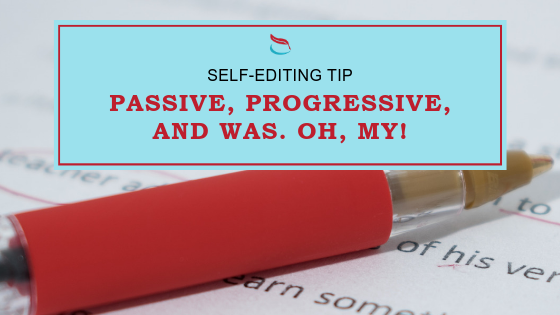
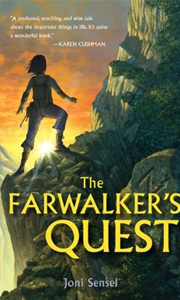
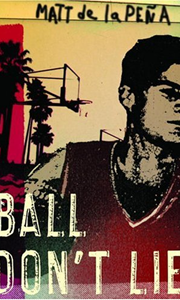
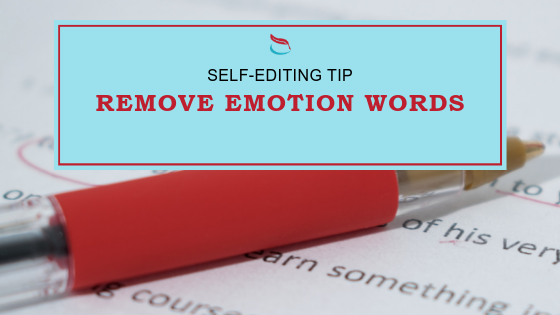



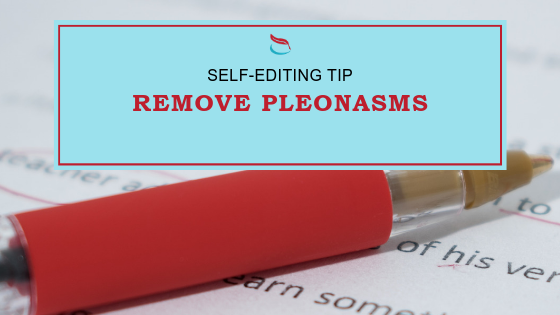



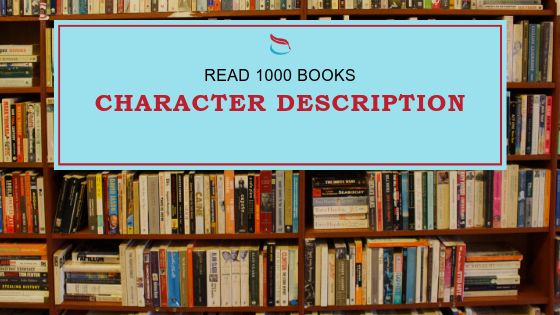
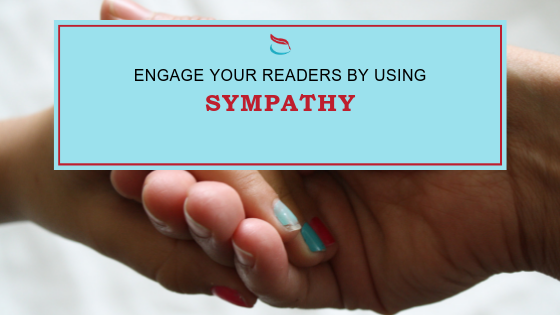
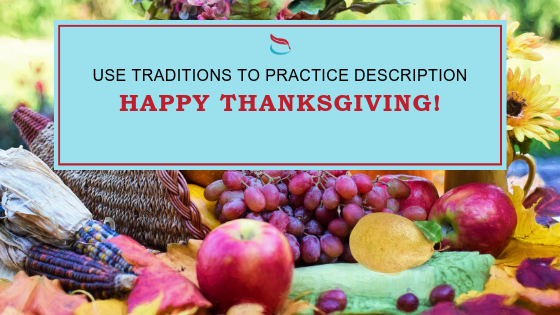
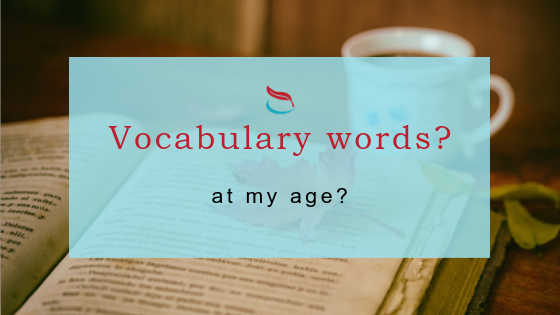
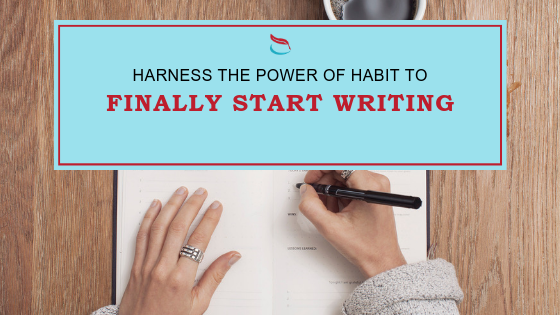

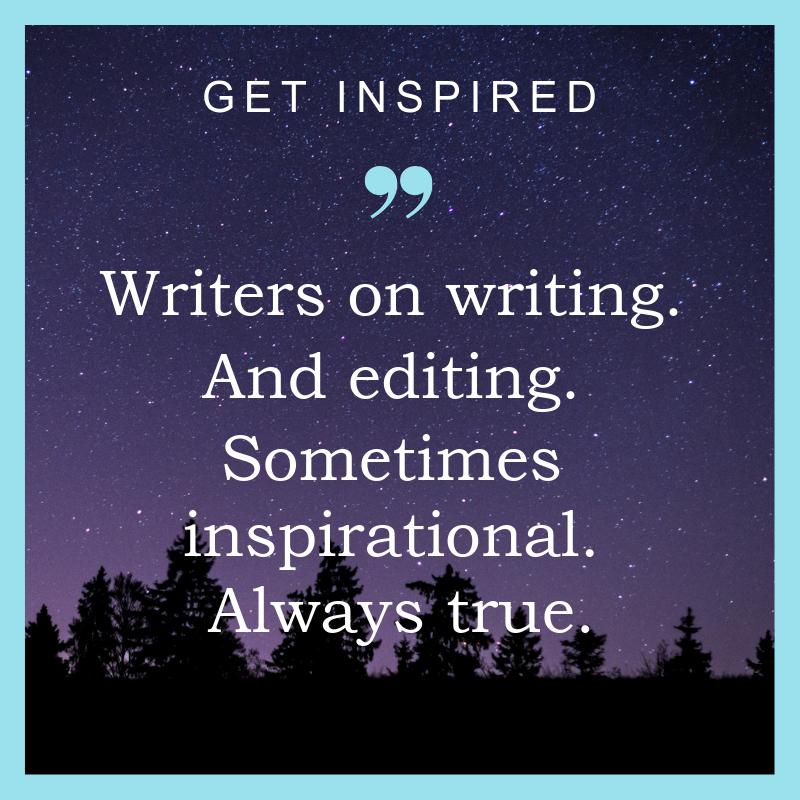
 RSS Feed
RSS Feed
